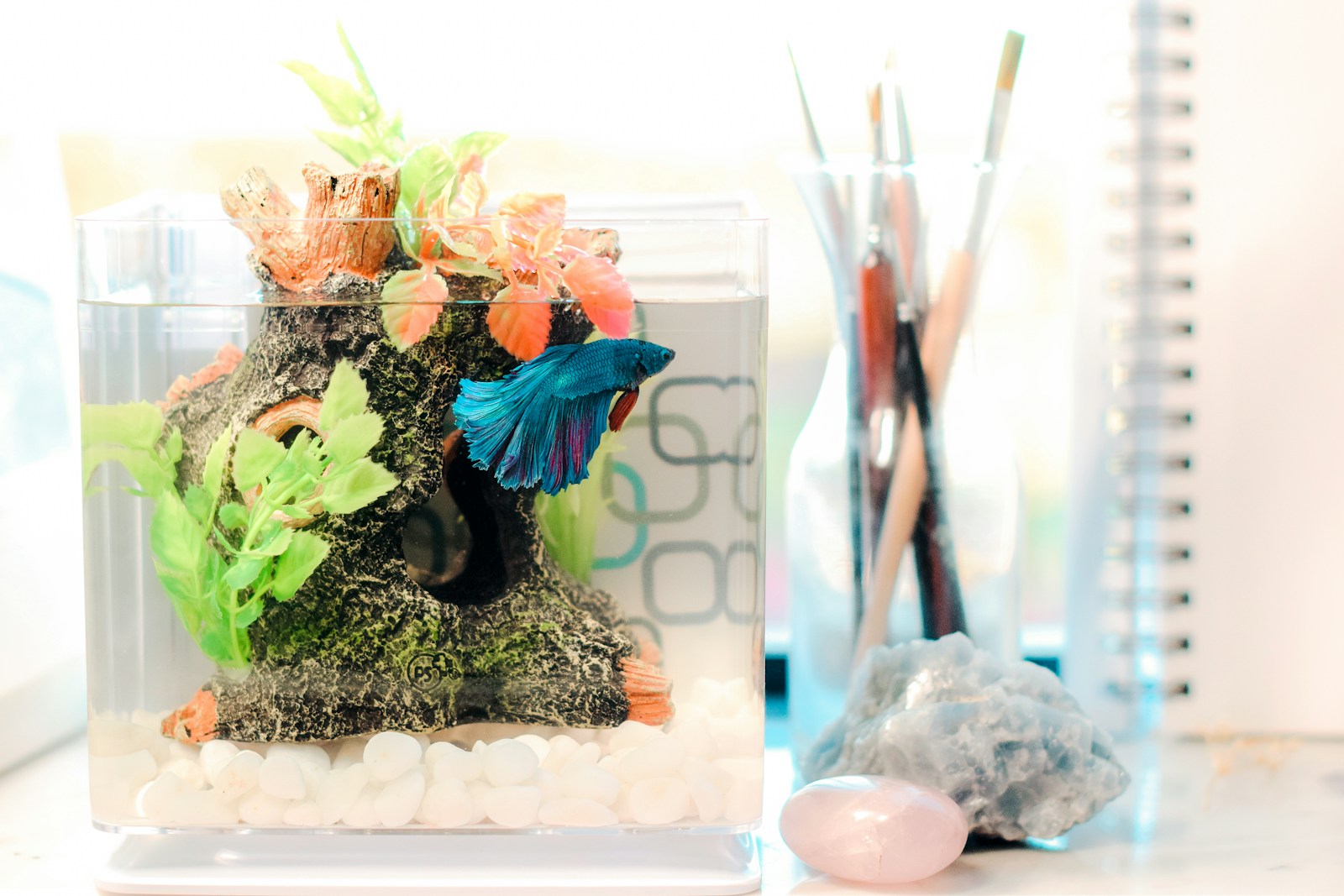Will a Betta Fish Kill a Goldfish?
Many fish enthusiasts wonder whether a betta fish will kill a goldfish if they are kept together in the same tank. It is essential to understand the nature of betta fish and goldfish before considering housing them together. While it is not recommended to keep betta fish and goldfish in the same tank, there are certain factors to consider when making this decision.
Betta fish, also known as Siamese fighting fish, are known for their aggressive nature. They have been bred for centuries to fight other bettas, and they have a territorial instinct that can lead to aggression towards other fish. On the other hand, goldfish are peaceful and social creatures that prefer the company of their own kind.
One of the main reasons why bettas and goldfish should not be housed together is the difference in their ideal water conditions. Bettas are tropical fish that thrive in warm water with a temperature range of 78-80 degrees Fahrenheit. Goldfish, on the other hand, are coldwater fish and prefer temperatures between 65-72 degrees Fahrenheit. This significant difference in temperature requirements can lead to stress and health issues for both fish if they are kept together in the same tank.
Another factor to consider is the difference in their dietary needs. Bettas are carnivorous and require a high-protein diet consisting of pellets, flakes, and live or frozen foods. Goldfish, on the other hand, are omnivorous and require a diet that includes both plant matter and protein. Feeding them the wrong type of food can lead to nutritional deficiencies and health problems.
In addition to the differences in temperature and diet, bettas and goldfish have different behavioral patterns. Bettas are solitary fish that prefer to have their own territory, while goldfish are social creatures that thrive in groups. Housing them together can lead to stress, aggression, and even physical harm to one another.
Furthermore, bettas have long, flowing fins that are prone to damage. Goldfish, with their curious nature and tendency to nibble on things, may mistake the betta’s fins for food and nip at them. This can result in torn or shredded fins, which can lead to infection and other health issues for the betta.
Behavior
Male betta fish are not only territorial but also highly competitive. In the wild, they engage in fierce battles with other males for breeding rights and territory. This aggressive nature has been selectively bred in captivity, resulting in the creation of various betta fish strains with vibrant colors and elaborate fins.
The aggression displayed by male betta fish is not limited to their own species; they can also exhibit hostility towards other fish in their tank. This is especially true for fish with similar appearances or long fins, such as goldfish. The sight of another fish with flowing fins can trigger the territorial instincts of a male betta, leading to aggressive behavior.
When a male betta fish perceives a potential rival in its territory, it will flare its fins, puff up its body, and display vibrant colors as a warning. If the intruder does not retreat, a fight may ensue. These fights can be intense and can result in injuries or even death for the weaker fish involved.
To minimize aggression and potential harm to other fish, it is important to provide male bettas with ample space and separate them from other species that may trigger their aggressive behavior. This can be achieved by providing each betta with its own tank or by carefully selecting tankmates that are peaceful and have different appearances.
It is worth noting that not all betta fish display the same level of aggression. Some individuals may be more docile and tolerant towards tankmates, while others may be highly aggressive and need to be kept alone. Understanding the temperament of individual bettas and providing them with suitable living conditions is crucial for their well-being and the harmony of the aquarium environment.
Compatibility Issues
Goldfish, on the other hand, are peaceful and social fish that prefer to live in groups. They are known for their hardy nature and can tolerate a wide range of water conditions. However, goldfish have different temperature and water quality requirements compared to betta fish.
Betta fish prefer warmer water temperatures, typically around 78-80°F (25-27°C), while goldfish thrive in cooler water temperatures, around 68-74°F (20-23°C). This difference in temperature preferences can make it challenging to maintain an ideal environment for both species in the same tank.
In addition to temperature differences, goldfish produce more waste compared to betta fish. They require a larger tank with efficient filtration to maintain water quality. Betta fish, on the other hand, are more sensitive to poor water conditions and may become stressed or susceptible to diseases if the water quality is not adequately maintained.
Another compatibility issue between goldfish and betta fish is their dietary requirements. Goldfish are omnivorous and require a varied diet that includes both plant matter and protein-based foods. They have a preference for algae and will often graze on it in the tank. Betta fish, on the other hand, are carnivorous and primarily eat meaty foods such as bloodworms and brine shrimp.
Feeding both goldfish and betta fish in the same tank can be challenging as their dietary needs differ. If one species is overfed or underfed, it can lead to health issues and nutritional deficiencies. Additionally, goldfish are known to be voracious eaters and may outcompete betta fish for food, leaving the betta fish malnourished.
Behavioral differences also pose a compatibility issue between goldfish and betta fish. Goldfish are active swimmers and require ample space to swim freely. They may become stressed or agitated if confined in a small tank or if their swimming space is limited. Betta fish, on the other hand, are known for their territorial nature and may become aggressive towards other fish, including goldfish, especially if they feel their space is being invaded.
Keeping goldfish and betta fish together in the same tank can result in territorial conflicts and stress for both species. The betta fish may nip at the fins of the goldfish, causing injury and potential infection. The goldfish, in turn, may chase and harass the betta fish, leading to constant stress and heightened aggression.
Risk of Aggression and Stress
When betta fish and goldfish are housed together, there is a risk of aggression and stress for both species. The betta fish may perceive the goldfish as a threat to its territory and exhibit aggressive behavior, such as fin nipping or chasing. This can lead to physical harm or even death for the goldfish.
Similarly, the goldfish may feel stressed and intimidated by the aggressive behavior of the betta fish. Stress can weaken the immune system of fish, making them more susceptible to diseases and infections. It is essential to provide a peaceful and stress-free environment for all fish to thrive.
Aggression in fish is a natural behavior that can be influenced by various factors, such as the size of the tank, the availability of hiding places, and the presence of other fish. In the case of betta fish, they are known for their territorial nature and can become highly aggressive towards other fish, especially those with long, flowing fins like goldfish.
When betta fish and goldfish are housed together, the betta may see the goldfish as competition for resources and may try to establish dominance. This can lead to aggressive behaviors, including biting, chasing, and even killing the goldfish. It is crucial to understand the natural behavior and needs of each species before considering housing them together.
Furthermore, stress can have detrimental effects on the overall health and well-being of fish. When fish are stressed, their immune system weakens, making them more susceptible to diseases and infections. Stress can be caused by various factors, such as overcrowding, poor water quality, inadequate nutrition, or aggressive tankmates.
In the case of goldfish, they are known to produce a significant amount of waste, which can quickly pollute the water if not properly maintained. This can create a stressful environment for both the goldfish and the betta fish, as poor water quality can lead to various health issues. Regular water changes, proper filtration, and monitoring of water parameters are essential to maintaining a healthy and stress-free environment for all fish.
It is important to note that while some fish species can coexist peacefully, betta fish and goldfish are not compatible tankmates. Each species has specific needs and behaviors that must be considered when setting up an aquarium. Providing separate tanks for betta fish and goldfish will ensure their well-being and prevent any potential aggression or stress-related issues.
Recommended Tank Setup
If you are interested in keeping both betta fish and goldfish, it is advisable to provide separate tanks for each species. This allows you to meet the specific needs of each fish and prevent any potential conflicts or stress.
For betta fish, a tank size of at least 5 gallons is recommended to provide ample swimming space and maintain stable water conditions. The tank should be heated to the appropriate temperature and equipped with a gentle filter to keep the water clean and oxygenated.
Goldfish require a larger tank due to their size and waste production. A minimum tank size of 20 gallons is recommended for a single goldfish, with an additional 10 gallons for each additional goldfish. The tank should have a powerful filtration system to handle the waste produced by goldfish and maintain good water quality.
It is important to research the specific requirements of each species and create a suitable environment for their well-being. Providing adequate space, proper filtration, and maintaining appropriate water conditions are key factors in ensuring the health and happiness of your fish.
In addition to tank size and filtration, it is also important to consider the tank’s decor and water parameters. Betta fish enjoy having places to hide and explore, so adding live or artificial plants, caves, and other decorations can create a stimulating and enriching environment for them. Goldfish, on the other hand, are notorious for nibbling on plants, so it is important to choose hardy species or use artificial plants instead.
Water parameters such as pH, ammonia, nitrite, and nitrate levels should be regularly monitored and adjusted as needed. Both betta fish and goldfish prefer slightly alkaline water with a pH range of 7.0 to 7.8. Ammonia and nitrite levels should be kept at zero, as these can be toxic to fish. Nitrate levels should be kept below 40 ppm to prevent stress and illness.
Regular water changes are also crucial for maintaining a healthy tank environment. For betta fish, a 25% water change should be done every week, while goldfish tanks require a 25-50% water change every week, depending on the tank size and number of fish. Water changes help remove excess waste, toxins, and maintain water quality.
Conclusion
While it may be tempting to house a betta fish and a goldfish together, it is not recommended due to their differences in temperament, water conditions, dietary needs, and behavior. It is best to provide each fish with its own suitable environment to ensure their well-being and happiness.

